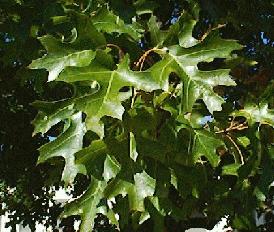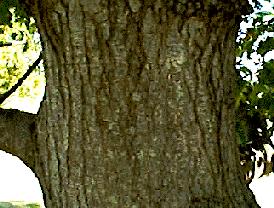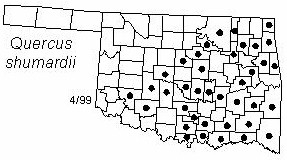

Tree to 25 m (80 ft) tall and 60 cm (2 ft) diameter, with rounded crown. Bark dark gray, smoothish, furrowed into ridges on lower trunk and older branches. Twigs slender, gray, glabrous, ending in a cluster of small pointed gray buds. Leaves alternate,elliptical, 8-18 cm (3.1-7 in) long, to 12 cm (4.7 in) wide, deeply divided into 5-9 lobes which are broadest toward the tip and end in several bristle-tipped teeth, dark green above, with tufts of hairs in vein axils below, turning brown or red in fall. Fruits are acorns maturing in the second year, egg-shaped, 1.5-3 cm (0.6-1.2 in) long, with a more or less shallow cup.
Distribution: Native to about the southeastern quarter of the United States.
Habitat: bottomland forests, mesic upland forests
Comment: An important timber tree, marketed with several other species as "red oak". It is a fast-growing hardy tree and is extensively used as a shade tree in Oklahoma. Quercus is the ancient classical name for the European oaks; shumardii honors geologist B. F. Shumard of Texas.
NWI status: FAC
Distribution in Oklahoma: 
BACK
NEXT
RETURN TO INDEX
Last update: 9/17/99
 Go to Oklahoma Biological Survey Home Page
Go to Oklahoma Biological Survey Home Page
 Disclaimer
Disclaimer